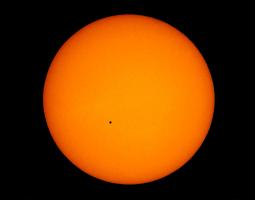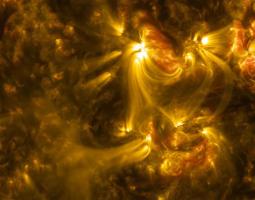NASA Heliophysics
Space is not, as is often believed, completely empty; instead, we live in the extended atmosphere of an active star. Heliophysics studies the very nature of this star and its effects on space. Our sun helps drive a constantly writhing magnetic system that surrounds it, Earth, and the planets -- and extends far out into the solar system. Studying this system not only helps us understand our place in the universe, but also helps protect our technology and astronauts in space.
While sunlight fundamentally enables and sustains life, our star can also produce radiation and magnetic energy that can disrupt planets’ atmospheres, our satellites, and even life. We study this space environment in order to send spacecraft and astronauts through it safely. Closer to home, we seek knowledge of near-Earth space, because -- when extreme -- space weather can interfere with our communications, satellites and power grids. What's more, the study of the sun and space can teach us more about the forces that forged the planets in the first place and even other star systems.
Mapping out this interconnected system requires a holistic study of the sun’s connection to Earth and other planets at both small and large scales. To accomplish this, heliophysics encompasses a vast range of research subjects, including: the sun's 11-year solar cycle; giant solar explosions such as solar flares and coronal mass ejections; the constant stream of solar particles called the solar wind; the magnetic environment near Earth; what drives change in the charged particles that surround Earth and inhabit the ionosphere; the boundaries of the solar system as it travels through our interstellar neighborhood; and much, much more.
NASA's Heliophysics Division studies the sun in many wavelengths in order to better understand why it is so dynamic and how its constant radiation affects the space around it, Earth, and all the planets. Such information helps us better protect our technology and astronauts as we our journey to explore takes us further and further from home.
Credit: NASA/SDO





